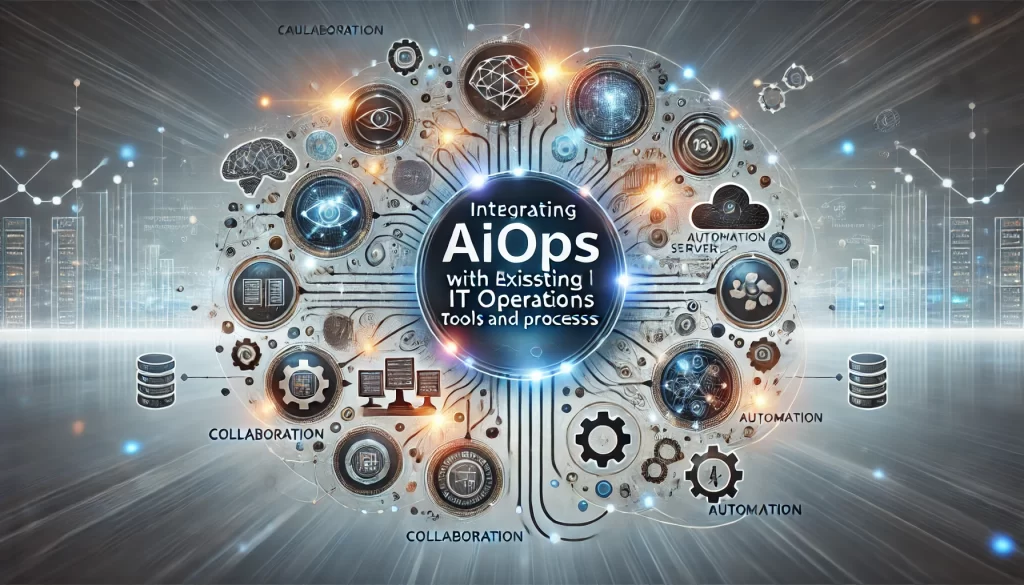
Artificial Intelligence for IT Operations (AIops) has revolutionized the way IT systems are managed by introducing real-time insights, predictive analytics, and automation into daily operations. However, AIops cannot work effectively in isolation. For organizations to harness their full potential, seamless integration with existing IT operations tools and processes is essential. This ensures that AIops complements rather than disrupts existing workflows. In this detailed guide, we’ll explore how to integrate AIops with current IT setups, address common challenges, and highlight solutions for successful implementation, including training, certification, and consulting services offered by theaiops.com.
The Importance of AIops Integration in Modern IT Operations
Organizations often rely on a range of tools for monitoring, logging, incident management, and workflow automation. These tools, while efficient in silos, may not provide the holistic, proactive capabilities needed to address today’s IT complexities. AIops fills this gap by:
- Enhancing Visibility: Aggregating data across tools to offer a comprehensive view of IT operations.
- Improving Proactiveness: Predicting potential issues and providing actionable recommendations to prevent downtime.
- Automating Tasks: Reducing manual intervention for repetitive tasks like incident triaging and resource allocation.
Step-by-Step Guide to Integrating AIops with Existing Tools
Step 1: Assess Your Current IT Landscape
Before integrating AIops, perform a detailed evaluation of your existing IT operations tools and processes:
- Catalog Tools and Systems: List all tools used for monitoring, logging, and ticketing (e.g., Nagios, Elastic, Jira, etc.).
- Identify Gaps: Highlight inefficiencies, such as frequent false alerts, lack of correlation between events, or delayed incident responses.
- Define Objectives: Determine what you aim to achieve through AIops, such as reducing Mean Time to Repair (MTTR), improving system reliability, or enhancing user experience.
Step 2: Choose an AIops Platform That Fits
Selecting the right AIops platform is critical to integration success. Evaluate platforms based on:
- Compatibility: Ensure they support APIs or pre-built connectors for your existing tools.
- Capabilities: Look for features like anomaly detection, root cause analysis, and workflow automation.
- Scalability: Choose solutions like Datadog, Elastic, or Dynatrace that can scale with your growing IT environment.
Step 3: Enable Data Aggregation
AIops relies on data from diverse sources to provide actionable insights. To ensure smooth integration:
- Set Up APIs: Use APIs to connect AIops platforms with tools like ServiceNow for ticketing or Splunk for logging.
- Create a Data Pipeline: Aggregate and normalize data from disparate sources to eliminate inconsistencies.
- Leverage Data Lakes: Utilize centralized data repositories for scalable data storage and processing.
Step 4: Automate Workflows
Identify repetitive tasks within your IT processes that can benefit from AI-driven automation. These may include:
- Incident Prioritization: Automatically categorizing and escalating high-priority incidents.
- Root Cause Analysis: Using AI to pinpoint the source of issues across connected tools.
- Capacity Management: Forecasting and allocating resources to avoid performance bottlenecks.
Step 5: Test and Optimize Integration
Pilot the AIops integration on a specific use case to measure its effectiveness:
- Monitor Key Metrics: Evaluate changes in MTTR, alert accuracy, and system uptime.
- Gather Feedback: Collect input from IT teams to identify areas for improvement.
- Refine Models: Continuously train AI models to adapt to new patterns and reduce false positives.
Overcoming Common Challenges in AIops Integration
Challenge 1: Data Silos
Fragmented data across different tools can limit the accuracy and reliability of AIops insights.
Solution:
- Centralize data collection using tools like Elastic or Prometheus.
- Normalize data formats to ensure consistency.
- Train teams in data aggregation techniques through resources from theaiops.com.
Challenge 2: Resistance to Change
Teams accustomed to traditional IT workflows may resist adopting AIops-driven automation.
Solution:
- Provide comprehensive training on AIops platforms to build confidence.
- Highlight the benefits, such as reduced workload and improved incident resolution times.
- Offer certifications from theaiops.com to validate their expertise and encourage adoption.
Challenge 3: Integration Complexity
Integrating AIops with existing tools in a hybrid or multi-cloud environment can be technically challenging.
Solution:
- Opt for AIops platforms with pre-built connectors for popular tools like ServiceNow, Nagios, and Jira.
- Use consulting services from theaiops.com to design tailored integration strategies.
- Start with a pilot program to minimize risks and refine processes.
Benefits of AIops Integration with Existing Tools
- Unified IT Operations: Centralized dashboards provide a complete view of system health and performance.
- Faster Incident Resolution: AI-driven insights help resolve issues faster by pinpointing root causes.
- Scalable Automation: Streamlined workflows adapt to changing demands, reducing manual intervention.
- Cost Optimization: Improved efficiency lowers operational costs and maximizes resource utilization.
How Theaiops.com Supports AIops Integration
Successfully integrating AIops requires skilled professionals and expert guidance. Theaiops.com offers a range of services to support companies and individuals:
- Training and Certification: Learn to integrate AIops platforms like Datadog, Splunk, and Kubernetes with real-world use cases.
- Consulting Services: Get expert advice on planning and implementing AIops strategies tailored to your IT ecosystem.
- Support Services: Ensure seamless operation with ongoing support for AIops tools and processes.
- Freelancing Resources: Hire experienced AIops professionals to accelerate your integration projects.
How DevOpsSupport.in is helping in DevOps, SRE, and DevSecOps Services.
DevOpsSupport.in helps organizations improve their IT operations through specialized services in DevOps, Site Reliability Engineering (SRE), and DevSecOps. They automate development and deployment processes using CI/CD pipelines, enhance system reliability with proactive monitoring and incident management, and integrate security into the development lifecycle through automated security testing and continuous compliance. This holistic approach accelerates software delivery, ensures high system availability, and strengthens security, driving operational efficiency and business growth.
